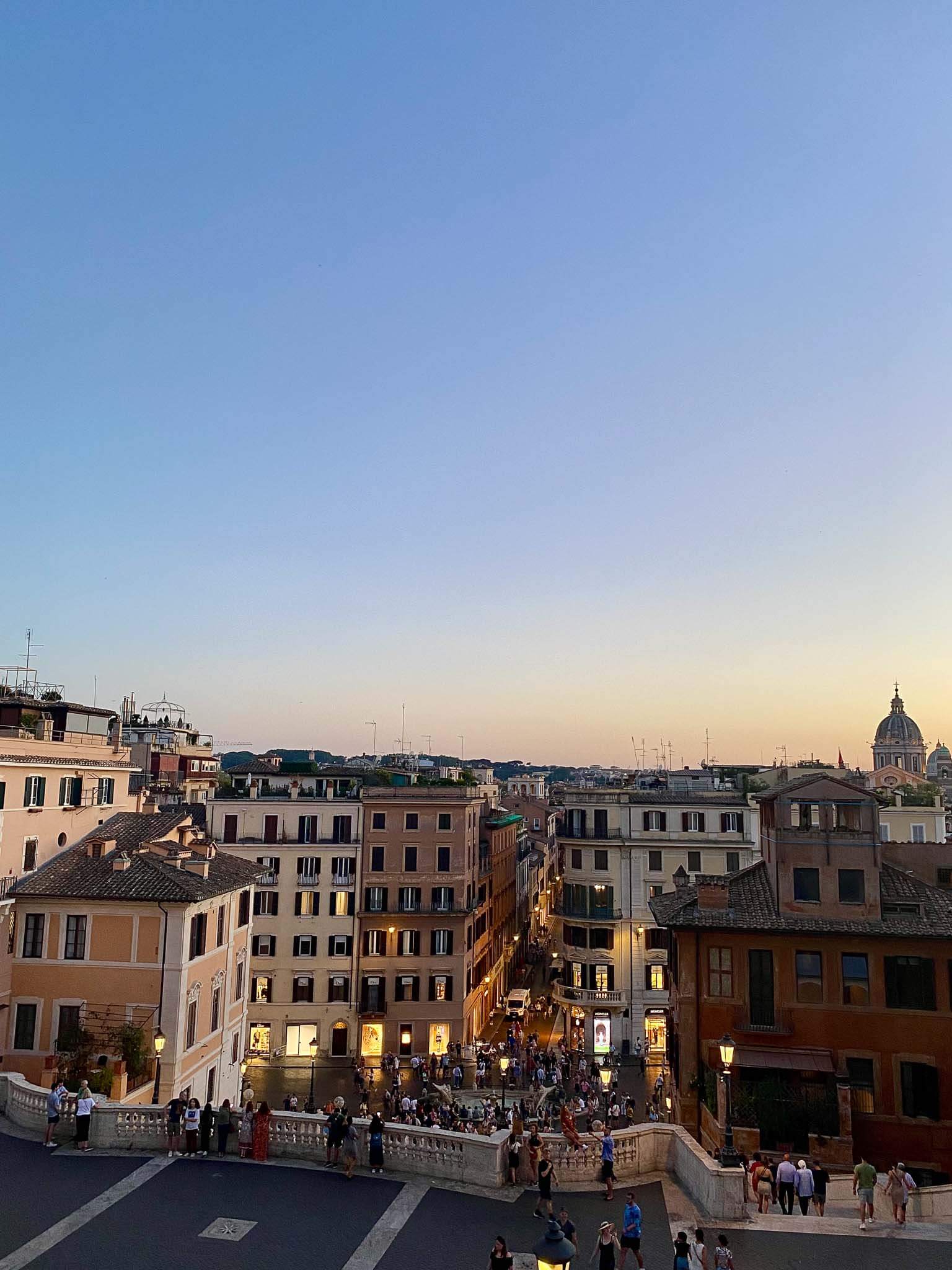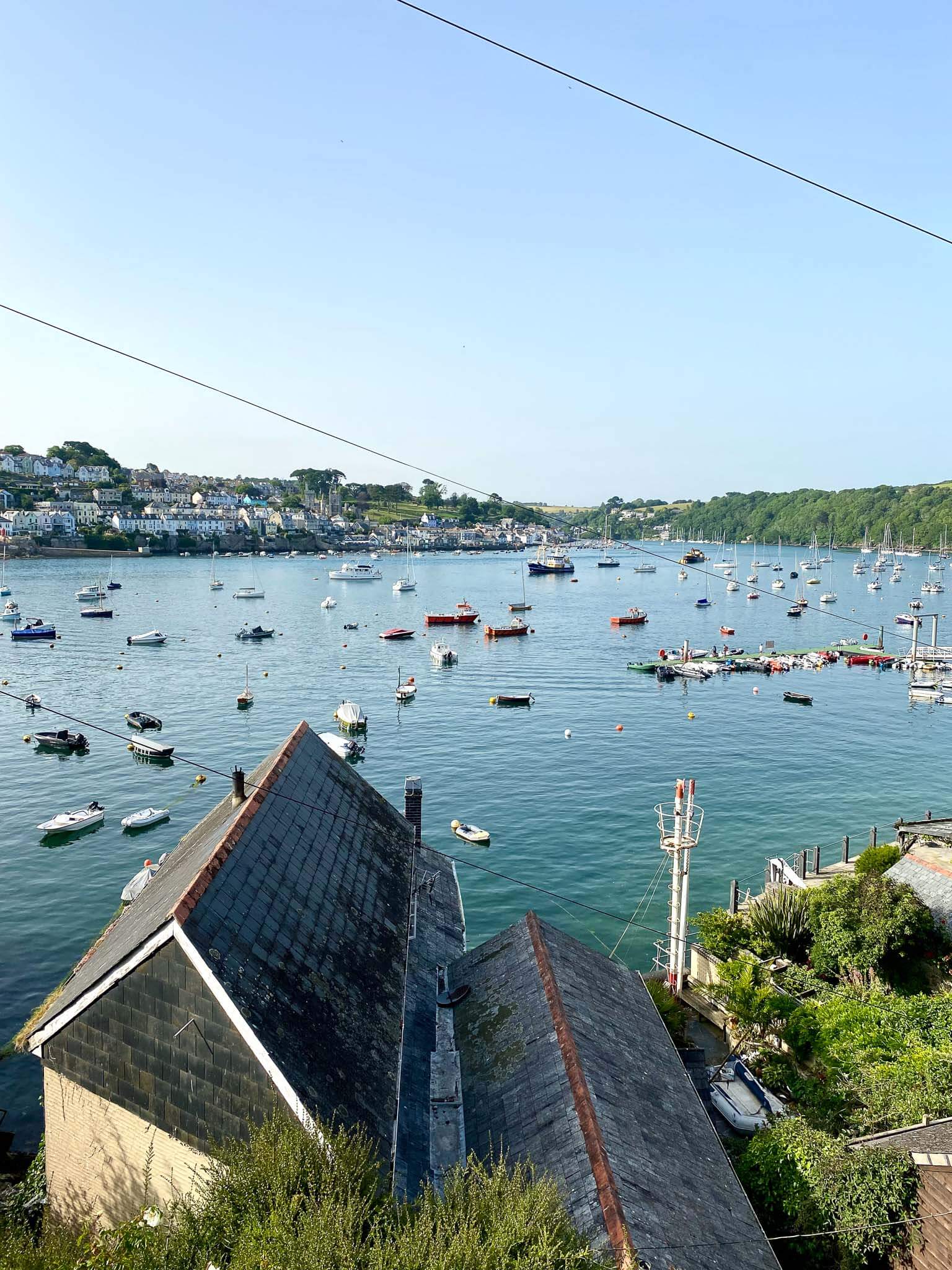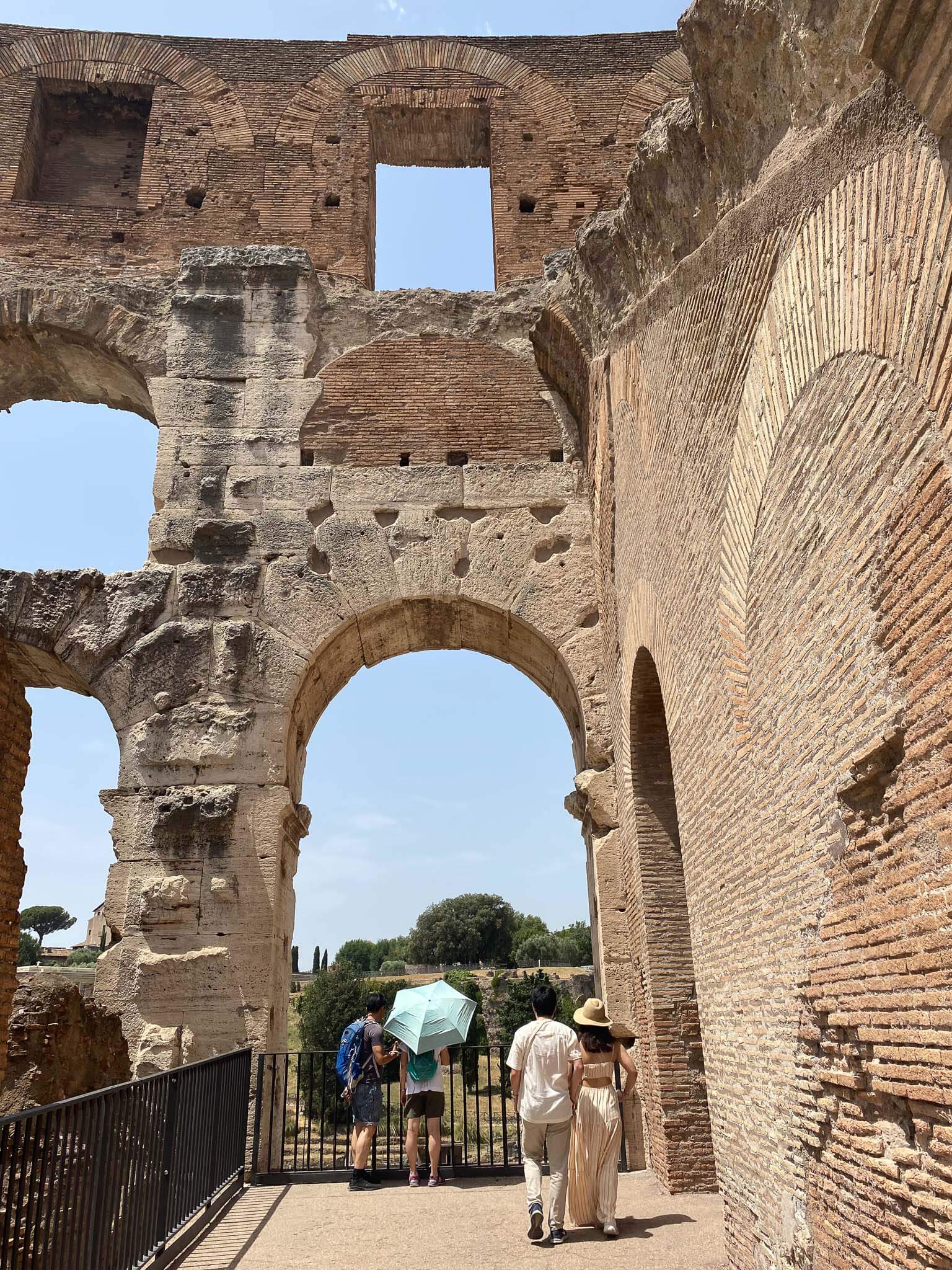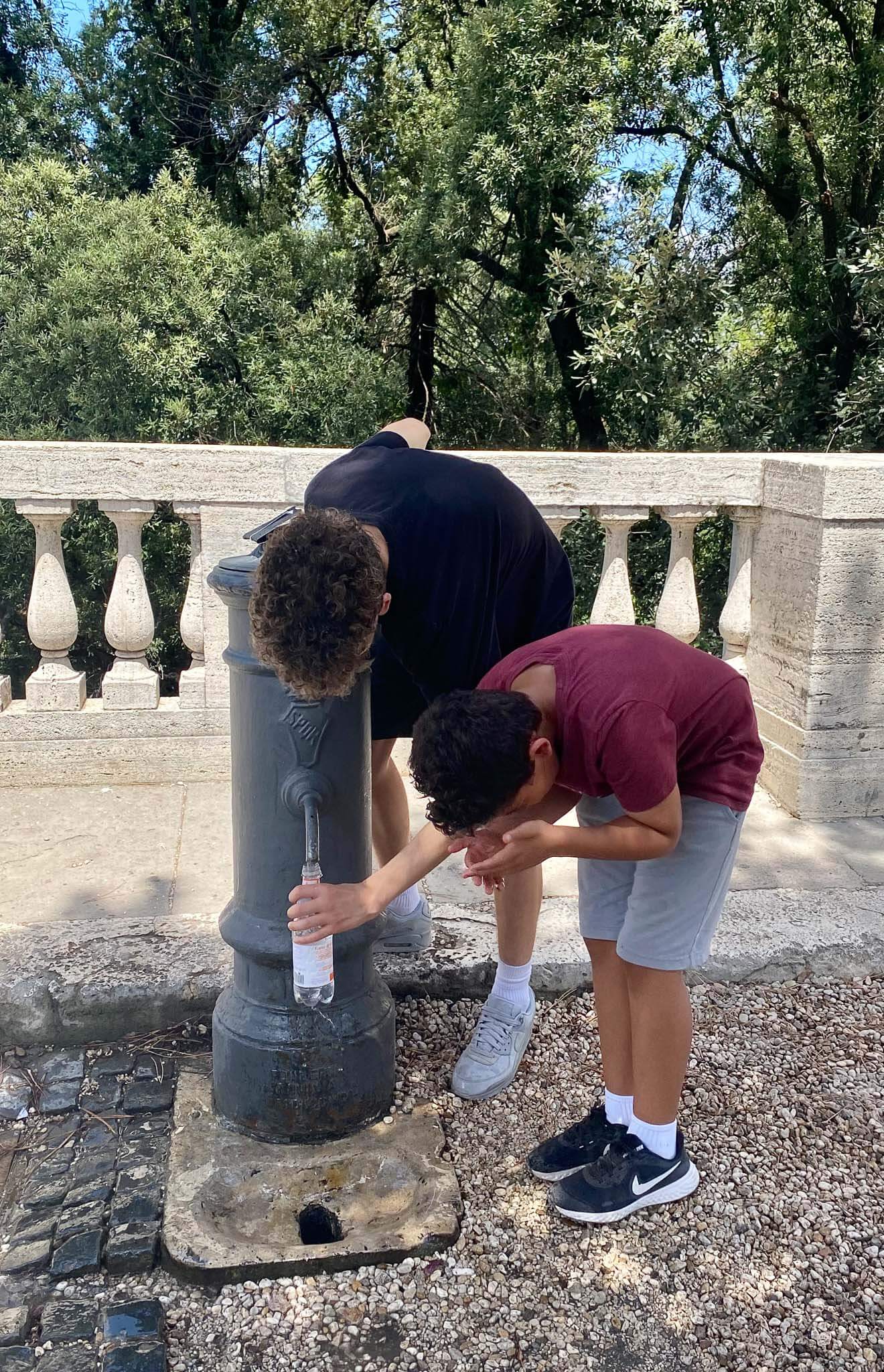Travel to Europe in summer has changed with the unbearable heat that can entrap much of the continent these days. Have you been affected by the heat wave in Europe? Have you thought about how this new pattern of yearly heat waves affects travel to Europe? Do you have new ways to travel when it’s hot?
Like many Americans, we love traveling in Europe and were extremely excited to be able to spend 3 weeks there in summer 2022. We had fantastic weather in England and France but then some very hot days in Italy (including a record-breaking day and wildfire smoke).
We quickly learned that being in 100-degree heat while traveling, when we need to be out and about most of the day, is quite different from dealing with heat at home, where there’s ample air conditioning, we travel by car, and we often just stay indoors. But we found ways to deal with the heat and made the most of our trip. Here are my tips for enduring the heat while traveling:
10 Tips for Travel to Europe in Summer When It’s Hot
-
Take early morning walks.
I know it’s hard to get up early when you’re traveling, especially if you tend to stay up late for evening dinners/walks/gelato, but it is worth it to wake up early and walk in the city before the rest of the tourists arrive and temps start to rise.
In Rome, when the forecast showed 90s by late morning, we got up at 6:30 and left at 7:00 for an early morning walk. It was one of the highlights of our trip.
We saw sights without tourists, watched locals working early, visited a church with no one but us to admire the mosaics, and enjoyed an early morning cappuccino and cornetto with a bunch of local dudes. And we avoided the hot weather that descended on the city for the rest of the day!

If you can, get up and out the door as quickly as possible. You can have your coffee and breakfast on your walk. Look for a cafe where local people grabbing their morning coffee and do the same. Have a destination in mind and aim for about 4 miles of walking total.
2. Take advantage of public water fountains.
Rome has about 2500 nasoni, or public water fountains, with clean, cold water circulating nonstop. With so many around the city, they allowed us to stay cool. We could refill water bottles and splash cold water on our faces whenever we wanted.
You can find them in other European cities, too. Here’s a map of public water fountains in Paris.
3. Come prepared.
If you have to go out when it’s blazing hot, come prepared. Bring a small backpack or shoulder bag with an umbrella for shade, plenty of water, and a small wet towel that you can put around your neck. (You can reuse a plastic grocery bag to store the damp towel.) Go slowly and reset your expectations.

4. Avoid crowded museums in summer in Europe.
In Europe we didn’t find the blasting A/C that is so ubiquitous in the U.S. in the summer. That’s great energy-wise but made for some hot museum visits! Many of the museums that we visited were crowded and stuffy.
If you can, avoid museums that you know will be crowded, especially ones that have small indoor spaces (like the Natural History Museum in London or the Vatican Museums). If you do go, try arriving first thing in the morning and bring an old-style hand-held fan (of course, folded paper works well too!). Late afternoons are good for avoiding crowds but the museums may be hotter then.

While visiting Paris, we found the Louvre to be very crowded but manageable thanks to the large size of the museum rooms, but the Musee d’Orsay was ridiculously packed and hot, even in the late afternoon.
In London the British Museum and Victoria & Albert Museums were big enough to handle the crowds, but the Natural History Museum was absolutely packed and very stuffy.
In Rome, St. Peter’s Basilica is so huge that people can spread out, but the lines for security and the dome climb are in the sun. Go early to the basilica (by 8 am) to avoid the lines.
5. Opt for lesser-known museums.
Going to museums is a great way to beat the heat outdoors, but as I mentioned above, when it’s hot and stuffy inside, it’s not much fun. Try museums that are less popular, like the Musée de l’Armée in Paris (the armor section covers 800 years!).

Other lesser known museums/sights worth a visit: the V&A in London, Musée Carnavalet in Paris, the Bargello in Florence, the Pantheon in Paris (don’t miss the crypt), the necropolis tour under St. Peter’s in the Vatican City, and Centrale Montemartini in Rome.
6. Visit local churches or department stores to escape the heat.
While in Rome, the heat made it hard to be out for most of the day. After a morning outing, we would spend the entire afternoon in our accommodation with A/C. But I didn’t want to miss out, so I looked for short outings that we could do every afternoon. Something a few blocks away that would take an hour or less.
I researched local churches and found several interesting ones near our place. These churches offered a cool indoor space to see art and relics, learn more about Rome’s history, and even relax in one church’s cloisters.
Local department stores can also be a good place to cool off in the afternoon. Even if you’re not into shopping, it’s fun to see what other countries offer at their nice department stores!
We stayed just a few blocks from the beautiful La Rinascente in Rome and had fun browsing their souvenirs, food items, and accessories. (Tip: go to the basement to see an ancient Roman aqueduct found during the construction of the store!).
Department stores also offer easy food options. Stores like Selfridges on Oxford Street in London have a nice food hall or a rooftop restaurant where you can have a cocktail with a view.
7. Eat a light lunch in and then go out for dinner when it’s cooler.
I was shocked how many people were sitting outside eating lunch in the 100-degree heat in Rome. We avoided this by buying groceries and having a light lunch in our accommodation and then going out for dinner in the late evening when the temperatures start to drop and the sun goes down. And after dinner, you can continue the evening with my next tip…

8. Take evening walks.
Adding a long evening stroll to your schedule is a great way to get more out of the day and see the place in a different light. Most European cities light up the monuments and fountains at night, making for a completely different view from the daytime. Don’t forget about churches — many churches stay open until late.
We loved our evening walks in Rome when we visited piazzas, fountains, gelato shops, and, of course, the Spanish Steps (crowded but still lovely). In Paris, we visited the Eiffel Tower at night by watching the light show at 11 pm from the riverbank near the Iena metro stop.

9. Keep in mind the heat when using trains or public transit.
Train travel is wonderful, but the trains are generally warm, especially in summer when so many people are traveling. It didn’t really bother me, but to avoid hot and stuffy trains, try taking trains as early in the day as possible.
The same is true for public transit (busses and subways) in much of Europe. Bring water and something to fan yourself, and try to plan your rides as early in the day as possible. Consider taxis for short distances if it’s really hot.
10. Change up your plans for travel to Europe in summer to avoid the extreme heat.
Travel to Europe in summer in extreme heat is a drag. With temperatures rising in Europe year after year, summer travel may no longer be a reasonable option. After enduring very hot days in Rome and seeing how both tourists and locals are suffering during this summer’s heat wave, I have changed how we will approach future trips to Europe. Here are some ideas:
Try to go early in the summer (or at other times of the year). We beat most of the worst heat by traveling in June, but if you can travel in late spring, fall, or even in winter in southern Europe, you’ll be rewarded with all-around better travel conditions.
If you go in the summer, fly open-jaws and start at the southernmost city as early as possible in summer and work your way north.
Choose places that don’t get so hot. The extreme heat has affected Western Europe more than other places, but Scotland, Ireland, Scandinavia, countries farther east like Austria and Poland, and even the coast of Portugal (including Lisbon and Porto) tend to escape the extreme heat.

Or for travel to Europe in summer, maybe consider somewhere off the beaten path? Cornwall, the southwestern tip of England, has not suffered during this summer’s heat wave. When it was over 100 in London, it was about 20 degrees cooler in Cornwall.
It’s so beautiful and peaceful there, and with access to the cold water of the English Channel and lots of hiking trails, it’s a good place to get away from the heat of summer and enjoy nature mixed with culture and history.
What tips do you have for travel to Europe in summer? How do you stay cool while traveling during the summer in Europe?
More tips for traveling to Europe:
How to Pack Carry-on Only for Europe
Comfortable yet Cute Travel Shoes
A Family Trip to Italy and Portugal
And don’t forget to follow me on Instagram, where I share many more travel tips!







These heat-travel tips are a lifesaver! Your advice on hydration and proper clothing is practical and easy to follow. It’s great to see sustainability emphasized, too. A helpful guide for staying comfortable while traveling in warmer climates.